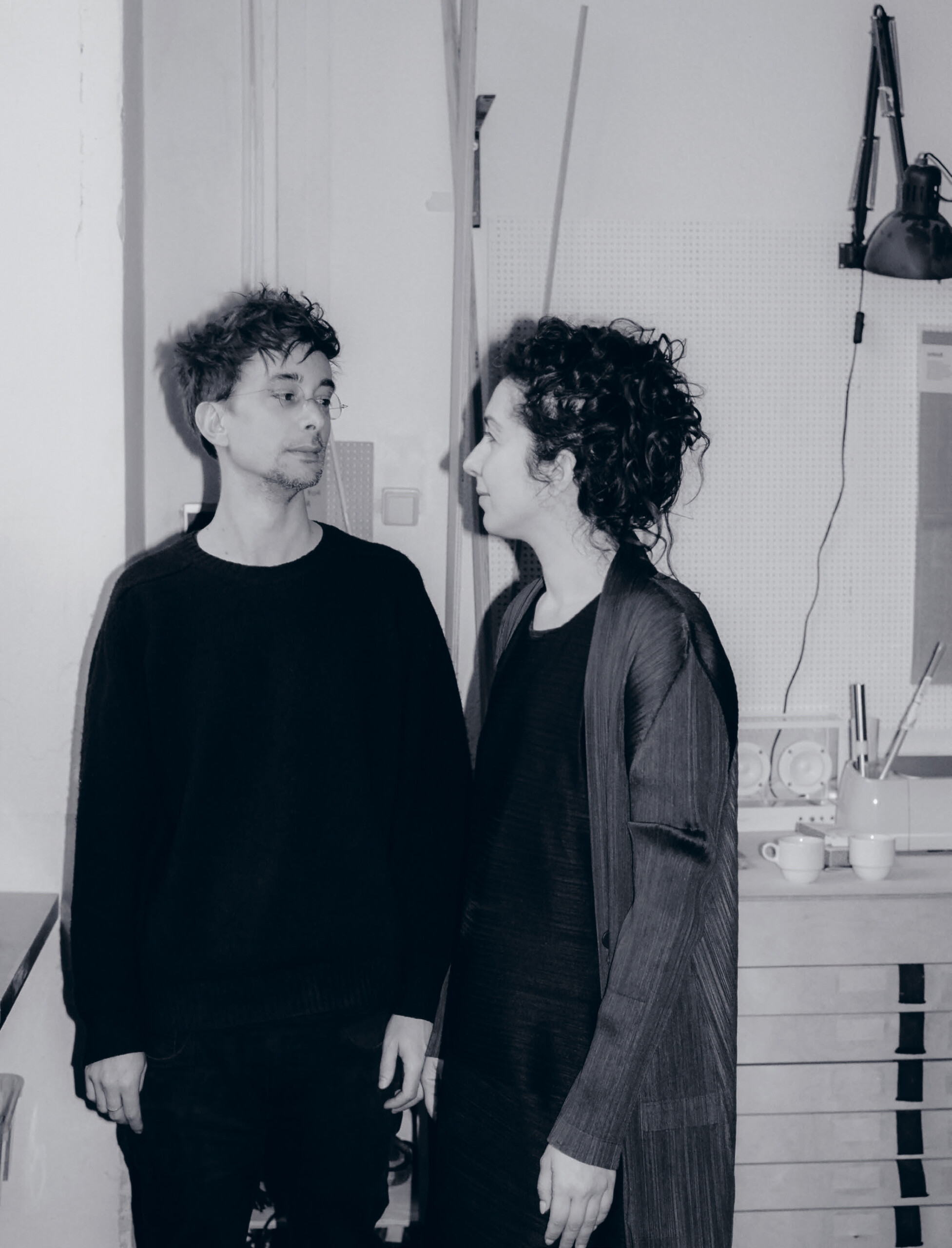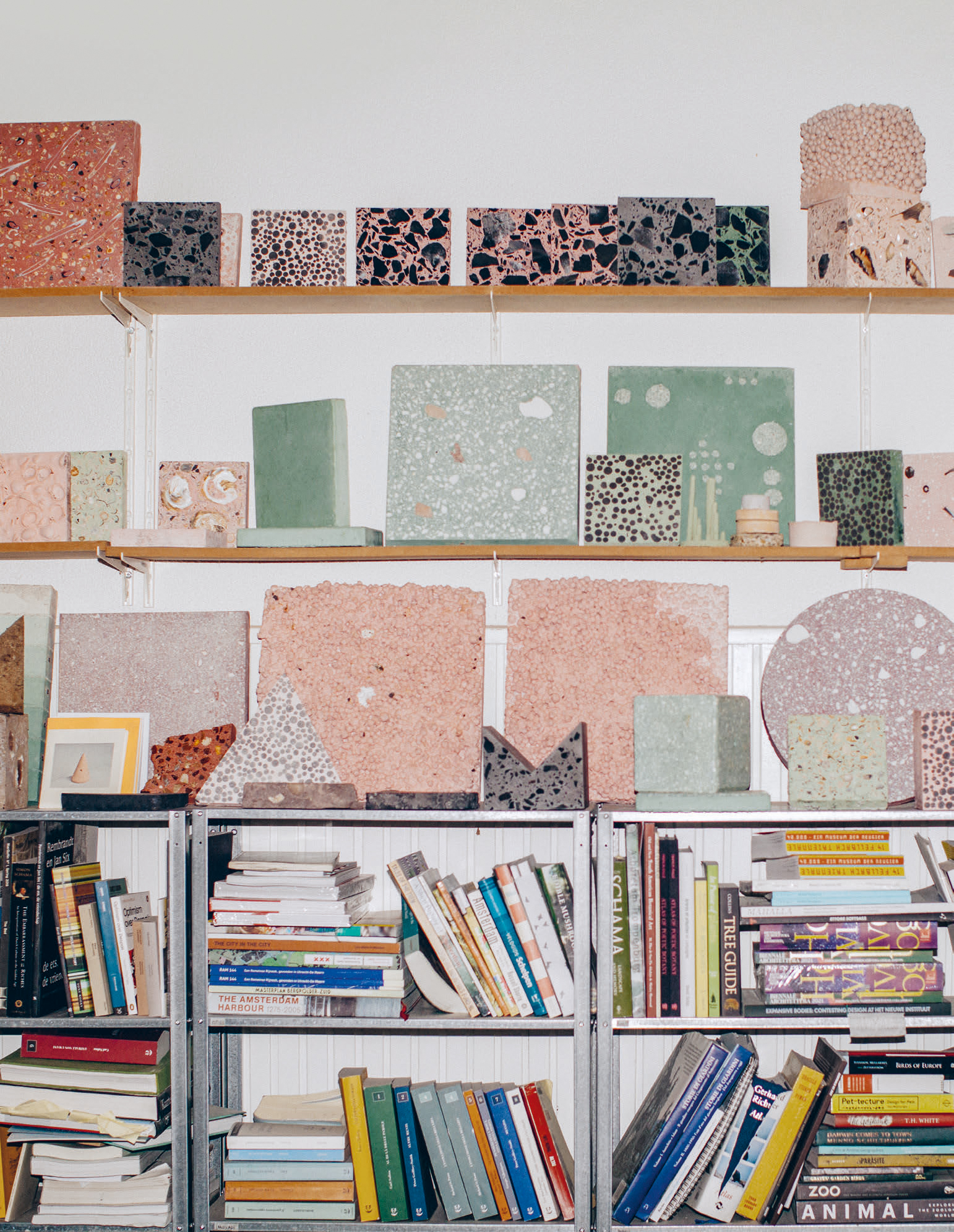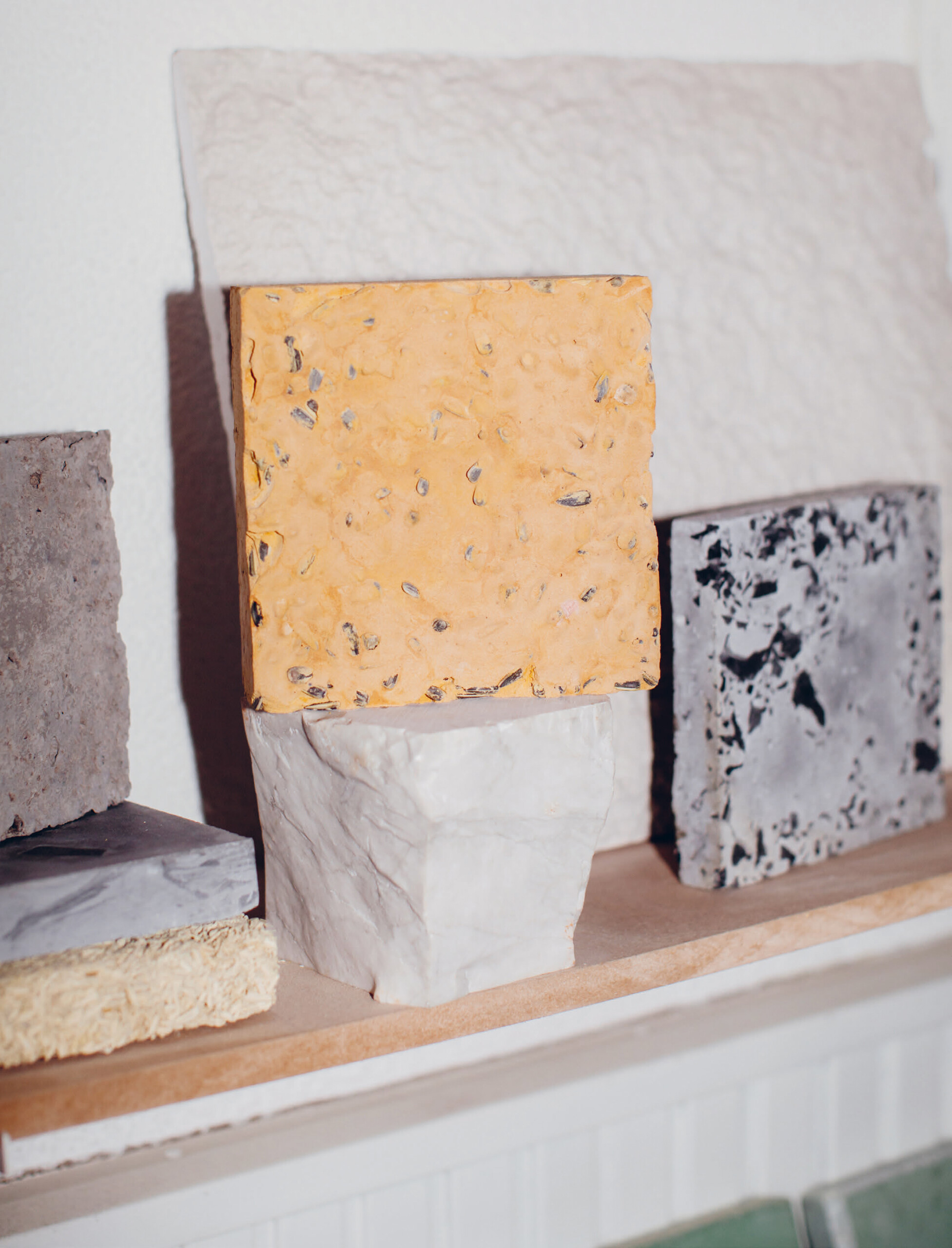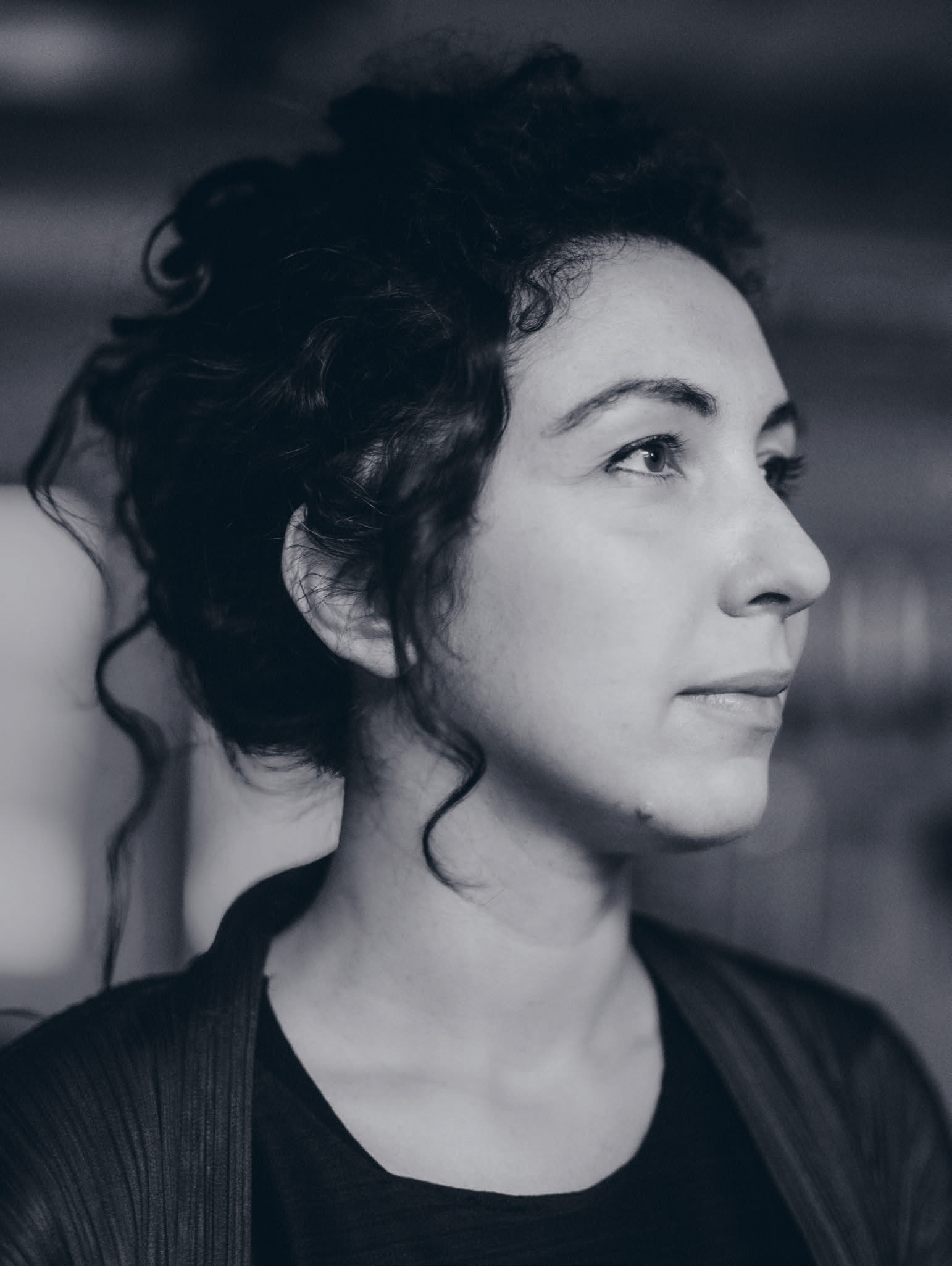„Birds don't need a floating island, but maybe we do“
Studio Ossidiana



While talking to Italian architects Alessandra Covini and Giovanni Bellotti, I imagine that birds are singing outside their studio in Rotterdam. If only the video call’s audio were strong enough to transmit their voices. Instead, Alessandra and Giovanni, a couple both personally and professionally, recall how they met during their studies at the Technical University in Delft and soon started collaborating on the theme of experimental public spaces on water. Since 2015, they have built an international reputation with their architectural commissions and public art projects realised with their Studio Ossidiana, including contributions to the Venice Architecture Biennial, the Istanbul Design Biennial and, more recently, Concéntrico, the International Architecture and Design Festival in Logroño, Spain.
Their methods are firmly rooted in architecture, but their practice extends beyond what is commonly known as the domain of architecture—buildings for humans. Their temporary gardens, artificial islands and sculptural installations propose recreational spaces in public squares and parks where humans and birds can encounter each other. While offering shelter, food and play to birds, their designs invite us to engage with the dynamics that unfold once birds start to inhabit the space, with plants and insects following suit. With imaginative spatial arrangements, the couple explores how our cohabitation with other species involves both mutuality and conflict as well as care and control.

Alessandra and Giovanni, you designed a series of wooden furniture that accommodates the needs of both humans and parrots by integrating landing platforms, perches, climbing opportunities and cavities for seeds. What sparked your interest in the relation between humans and birds in the first place?
G
B
When I studied urbanism at the Massachusetts Institute of Technology in Boston, I had the chance to live in a place that belonged to my professor. As part of my rent, I took care of her bird, which was a parrot like the one I had left back home with my mother in Italy. This inspired the subject of my thesis, where I investigated the spatial dimension of our relations with birds and how our encounters with birds have always been designed, starting from bird cages and bird traps up to bigger scales such as national parks.
A
C
During the first lockdown in 2020, we found ourselves working from our studio without our team and with our parrot, Coco, as our only company. He enjoyed flying freely around our studio during work hours, perching on our chairs and playing with project models. As a response to this, we designed Furniture for a Human and a Parrot (2021), as you mentioned, and we really loved to see Coco exploring it by clambering up and down and gnawing on it.
-
-
-
-
When you go about designing an object or a space that addresses birds as users, what are the main ingredients that make it work?
A
C
Perches keep coming up in our projects because they respond to birds’ preference to be at a distance from the ground. We first used them for the variations on Windsor pieces in Furniture and this inspired us to bring it from a domestic to an urban scale. Birds’ Palace (2021) is just one of the many projects where we have been using it since. It is a floating garden that is anchored in one of the ponds of Vondelpark in Amsterdam and that we designed as a space of encounter for the birds and the people of Amsterdam. Here, too, we included tall perches and added bird feeders. The artificial island was soon inhabited by ducks, geese and magpies, and as they ate the seeds, they deposited guano on the ground below them, dispersing seeds and fertilising the soil. Over several weeks, this turned it into a temporary flower field while offering park visitors the opportunity to become birdwatchers with the support of binoculars or cameras.
G
B
We see perches and bird feeders as mediative objects rather than end results; they are tools that work through engagement. At the beginning, they lay down some rough idea in our designs for something you want to grow or cultivate, or something you think might—or hope will—happen, based on some knowledge of birds and on very simple things that we exchange on the basis of trust, by feeding or accommodating other behavioural patterns. Once a relationship emerges from these artefacts and spatial arrangements, we become aware of our responsibility to take care of them and of the relationship. The bird—and I think this is true for almost every animal—is not just responding to our actions, but is actually being changed by what we do. And we, in turn, are changed by what the bird does. At the same time, we are very conscious of the fact that our projects are about people. The birds in Vondelpark don’t need a floating island, but maybe we do.
-
-
-
-
With most of us living in cities nowadays, it seems that we have an intensified longing for nature. At the same time, more and more animals are moving to the cities, where they find better living conditions and more food. In a sense, then, while we seek nature outside the cities, nature is entering the cities. To what extent are your designs also intended to prompt a shift in perspective in our relationship with nature?
A
C
With our projects, we like to show the complexities of the relationship we have with birds as well as with other natural beings or entities. They aren’t just about creating an environment for birds, but they talk about ourselves and our relationships with more-than-humans, which are full of contradictions and challenges. Take the Pigeon Tower (2021), for example, that we built in Venice at the Biennial. A dovecote created to resemble a pigeon, with shingles that looked like feathers and with little feet, it was a tribute to these birds that have been domesticated for millennia to serve humans for a wide range of purposes–for communication, food and company, but also for warfare and agriculture. All around the world, there were dovecotes or ‘pigeon towers’ that represented this relationship, and that are now merely considered as useless or an extravagant hobby.
G
B
And yet our life is so much tied up with pigeons. Today we have our fertilisers made synthetically in the lab, but up until the 1910s and 1920s, we were using pigeon guano for fertiliser as well as for—weapons and explosives. With these complex and multifaceted relationships in mind, what we were missing in contemporary discourse and spatial practice was that our relationships with other animals should not merely be oriented along a perspective of salvation. Saving yet another endangered species is a valuable pursuit, but it is always subject to what we perceive as culturally valuable or important on a quantitative scale, as with carbon emissions. Instead, we propose a fundamental level of affection. Projects like Birds’ Palace or Furniture for a Human and a Parrot are not primarily about being nice to birds, but about us becoming more fulfilled and happier through these relationships. In that sense, our projects want to inspire people to think about the beauty of relationships as a pursuit. Of course, people have always had these relationships. Animals have never really disappeared from cities. We seek to carve out the possibility of having these slightly more complicated relationships with other species, where we’re neither conquering them nor rescuing them nor being paralysed by a sense of guilt. The aim is for our projects to be born from a sense of hope rather than fear with regard to the future.
-
-
-
-
When you create installations to address wild birds, I imagine the engagement to be rather different from designing for domestic birds like Coco: while you can extend an invitation to birds, you can’t tell whether they will come, and if they do come, they may not stay for long. How does this play out differently in your work in the public space as opposed to the domestic?
A
C
This is a very interesting question, and it’s not one that we really have an answer for. When we say that our spaces are tools, it is because they offer us insights into how relationships unfold. For Utomhusverket (2021)—a public space for humans and birds, which we designed for ArkDes (Sweden’s national centre for architecture and design) on the island of Skeppsholmen just off Stockholm as an installation for the summer months during which the museum is closed to the public–we had a few conversations with an ornithologist who suggested creating a small enclosed garden with a lot of bushes and plants to accommodate the birds’ preference for hiding. With regard to our plans to design a pond, though, she was really sceptical and predicted that the birds would never come there because they would be too exposed. As it turned out, the opposite happened. No birds went into the bird garden, but the pool became an incredible attraction, especially for geese and goslings.
G
B
Our bird garden was this very small piece of earth that we modelled according to a Swedish forest with native plants and mosses, which was only accessible to the birds. It was our tribute to the definition of the wild, in the sense that it was untouchable and heavily protected. It soon became a very strange botanical chimera, because there were seeds from snacks like salted sunflower seeds that started to sprout and rapidly soared high above the fence. By contrast, the pond, about which we thought OK, maybe there won’t be any birds, but kids can play there and it may inspire other uses, became very popular with geese and gull chicks. In fact, a kind of negotiation unfolded between the curators of ArkDes and the birds throughout the summer. At times the birds were taking over, and the curators became gardeners and had to take decisions with regard to the evolving situation. For one thing, you can’t have that many birds because the place fills up with guano. The birds on the island started to be very territorial. And then some species were protected and others not, which meant that the Canada geese could be chased away, but not the local Swedish geese. By the end of the summer the birds had eaten most of the plants, especially the most delicious water plants, and there were flocks of birds coming to the pond as if they were going to the beach. Once a curator had to move a seagull chick that had fallen from a perch and because he did that, he was hunted by the seagulls for the rest of the summer. He couldn’t go to work for a couple of weeks because they recognised him. Our spatial proposal triggered all these things, which is what we had intended—not the pond or the bird garden in themselves, but a mix of opportunities from the behaviours and actions.
Please select an offer and read the Complete Article Issue No 14 Subscriptions
Already Customer? Please login.
